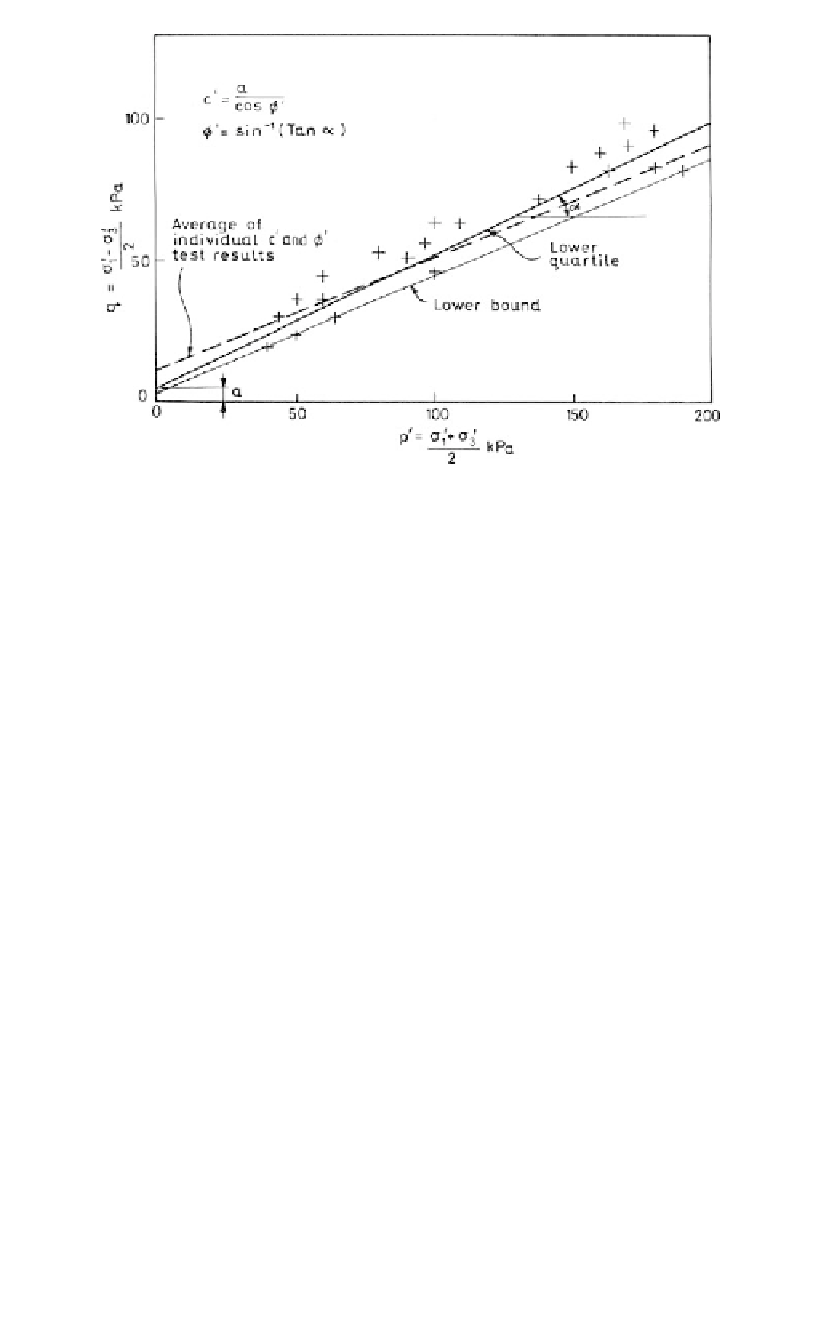Environmental Engineering Reference
In-Depth Information
Figure 11.6.
Typical p
-q plot of triaxial test results.
takes account of the variation of c
with water content at failure. The critical P, Q values
P
1
3
)/2 at failure are normalised by dividing by the equiv-
alent pressure at that water content (the pressure on the normally consolidated line at the
same voids ratio as the specimen). Wroth and Houlsby claim that this gives a more
rational way of selecting c
(
2
3
)/3 and Q
(
as a function of water content, particularly for fills. In prac-
tice this degree of sophistication may not be warranted.
11.3.1.3
Selection of design parameters - granular soils and rockfill
The strengths of granular soils and rockfill should be selected to account for the confin-
ing pressure, degree of compaction and particle size distribution and, for rockfill, the rock
substance strength and finer particles content as described in Section 6.1.10.
In most cases, particularly for rockfill, a bi-linear strength envelope should be used to
model properly the curvature of the strength envelope. If this is not done, the factor of
safety of smaller failure surfaces, particularly at the crest of the dam, will be significantly
under-estimated.
Depending on the confidence with which the strengths are able to be estimated (reflect-
ing whether there are good records of how the dam was built or not and whether testing
was carried out), either median or lower quartile strengths should be adopted.
11.3.2
Undrained, total stress parameters
11.3.2.1
Triaxial compression, extension or direct simple shear strength
As discussed in Section 6.1.3 and shown in Figures 6.10 and 6.12, it is important to allow
for the stress path in selecting the undrained strength. The undrained strength estimated
from triaxial compression tests only may significantly over-estimate the strength.
11.3.2.2
Selection of design parameters
The undrained strength of natural soft clay deposits usually shows a considerable scatter
which is due to natural stratification of the deposit and measurement errors.
Figures 11.7

